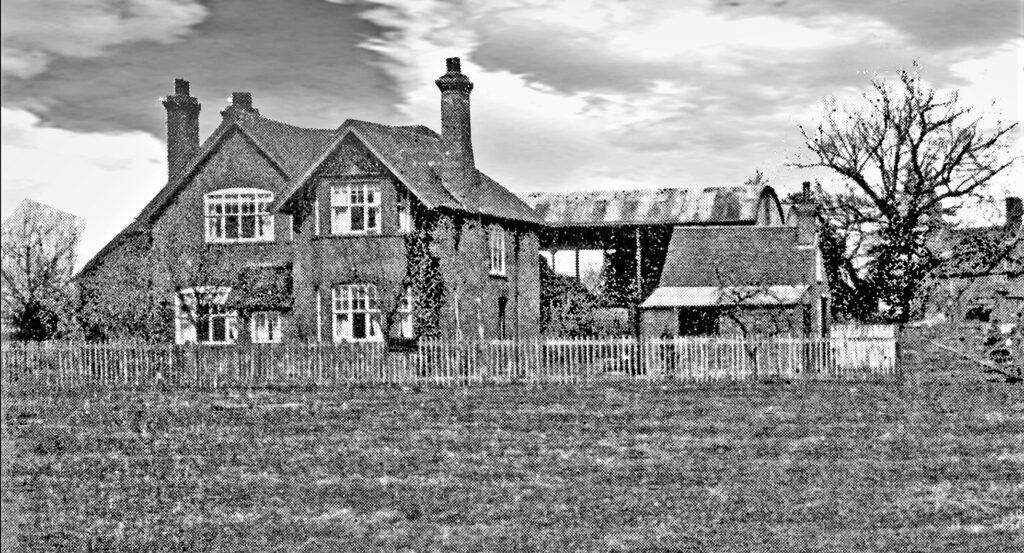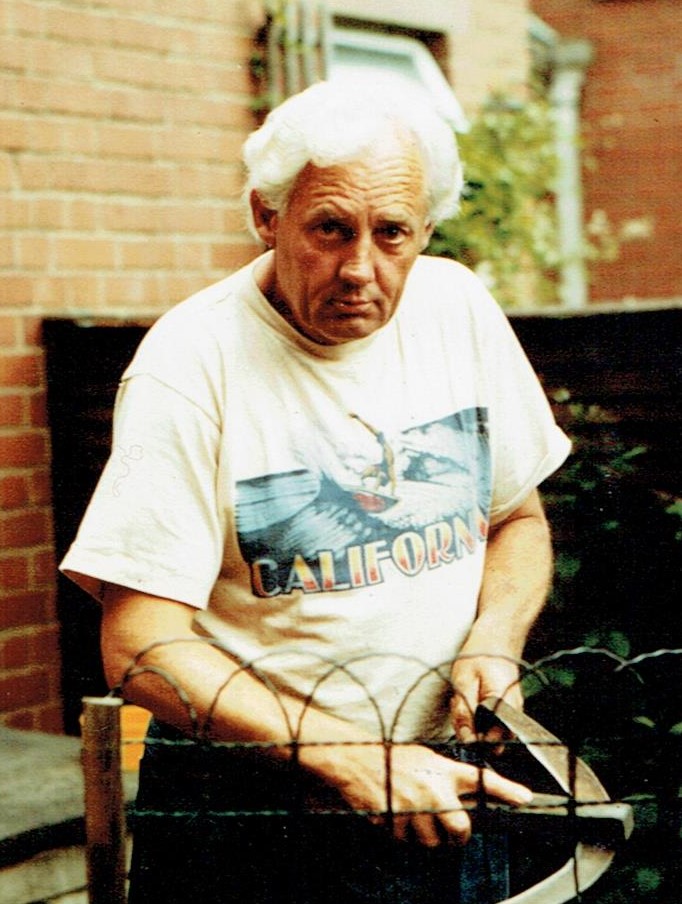Why the Council got into a right ‘Flap’ about a Few Dogs
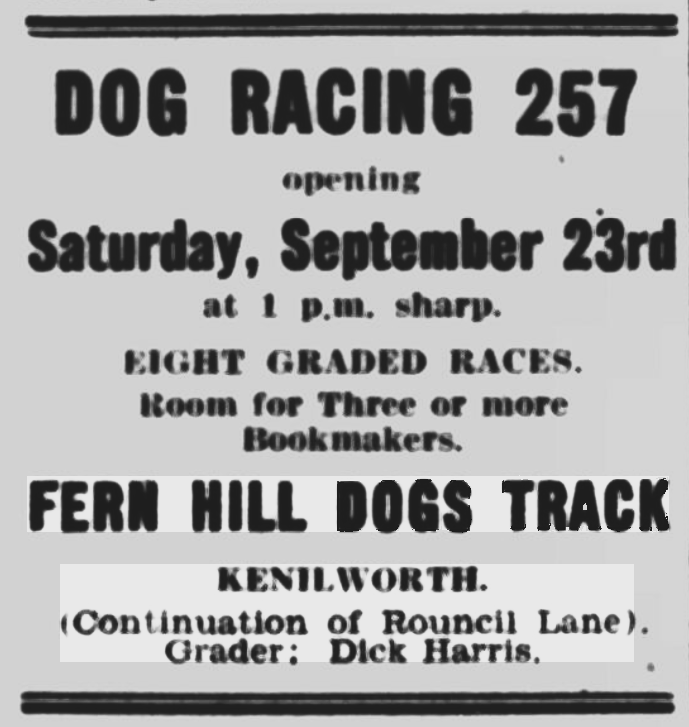
During the 1960s a greyhound track operated for a number of years at Fernhill Farm in Rouncil Lane. The first official race meeting took place on 23rd September 1961 (see advert). But It wasn’t until 1963 that it started to arouse controversy amongst the locals, when the owners decided to apply for planning permission for a permanent track.
Although regarded as part of Kenilworth, Fernhill Farm was actually part of the administrative responsibilty of the Warwick Rural District Council (WRDC) not the Kenilworth Urban District Council (KUDC). The site of the track (about 4.5 acres) was on the opposite side of the road to the farmhouse that is now known as Fernwood Farm, which once was one of two farms called Fernhill Farm. The other Fernhill Farm still exists.
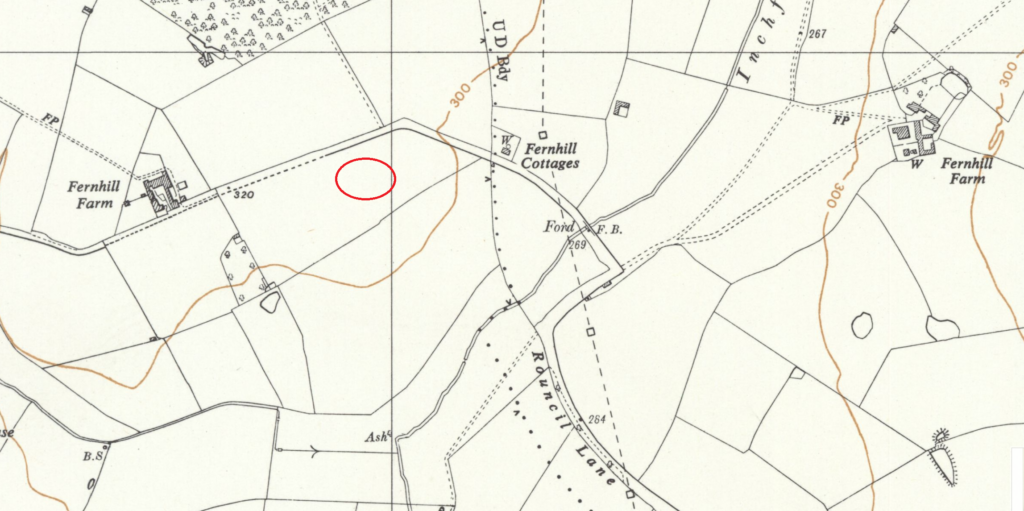
CLICK PHOTO TO ENLARGE
Permanent Track Refused
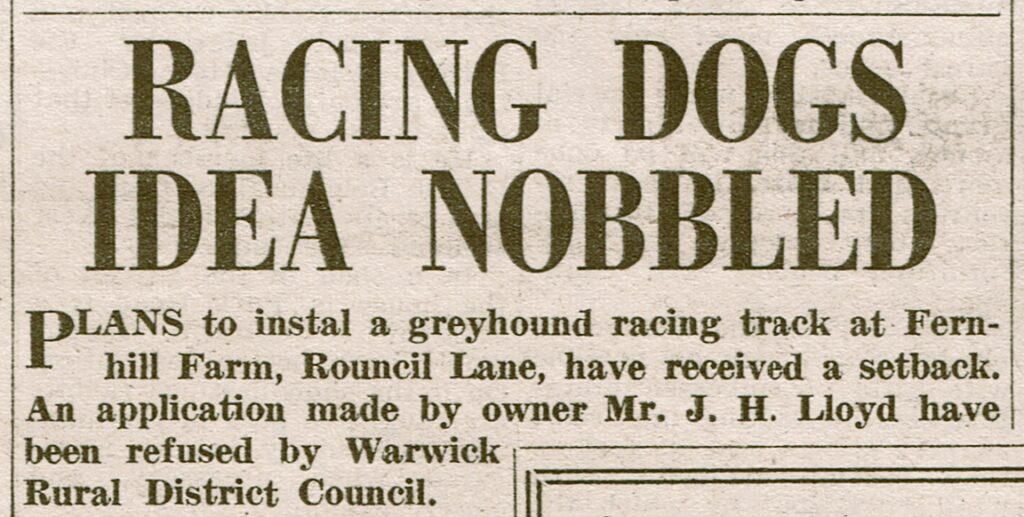
In November 1962, the WRDC rejected an application by Mr. James Henry Lloyd and Mr. Richard Charles Harris to install a permanent track on the farm. Their decision was based on four main issues.
1. It was in the green belt area.
2. The Ministry of Agriculture stated that the land was for argriculture use and nothing else.
3. The WRDC stated that a permanent track would be ‘detrimental to the amenities of the district’
4. An objection was lodged by the solicitors acting on behalf of the developers of the newly built Sunshine Housing Estate on the former site of Rouncil Towers.
The rejection was a setback for applicants, but they stated they would be appealling against the decision. 38 signatures had already been gathered supporting their application.
A shelter and toilets had already been built on the site. However, James Lloyd pointed out that the track was run on the lines of a private club, and was just a ‘Flapping Track’ and the usual national greyhound rules did not apply here. He added, the track is fairly primative and provided facilities for greyhound owners to keep their dogs in good condition. Attendances were no more than 150, attended mainly by owners, trainers and friends. The shelter and toilets were required to make it more comfortable for those attending, and was not intended to attract further spectators. Meetings had taken place intermitently at the farm over the last 12 months which prompted the planning application for a permanent track.
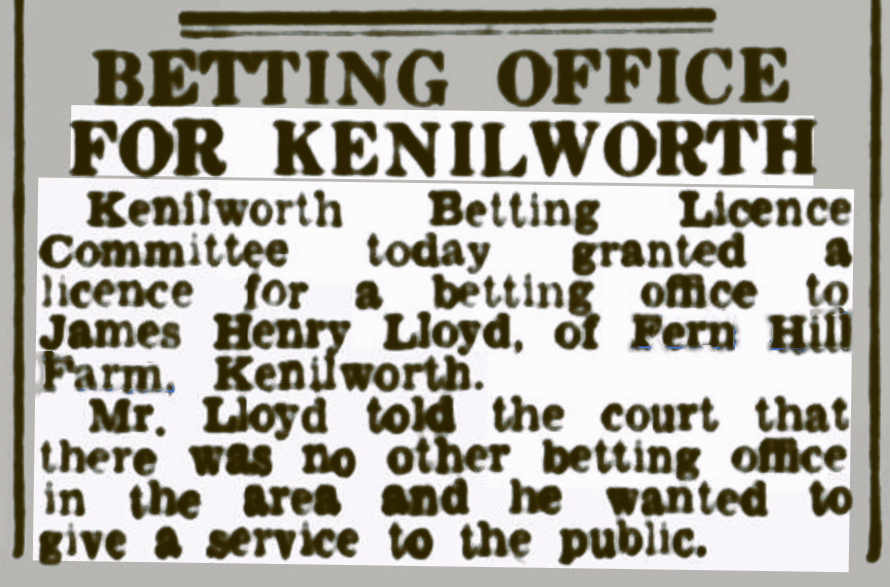
Mr. Lloyd had more than a passing interest in the gambling trade as he was the proprietor of J. H. Lloyd Turf Accountants in Park Road (now a private residence), which had first been licenced in late 1961.
Race secretary, Richard ‘Dick’ Harris had been involved in greyhound racing for many years and was an experienced greyhound grader. On 21st September 1962 (at around the time of their planning application) they also applied to Warwickshire County Council (WCC) to grant them a betting licence for the track. Their application was submitted by solicitors, Cooksey, Spencer & Co. of Coventry.
Residents and Building Company Object to Appeallants
An inquiry took place on 28th May 1963 at the offices of the WRDC in Leamington, where residents and other groups had the opportunity to object to the possiblity of the greyhound track ever being allowed to happen. 32 residents had signed a petition objecting to the appeallants. The inquiry was reported in the 1st June edition of the Kenilworth Weekly News, under the headline of ‘Protests About People Going To The Dogs’.
At the meeting, Mr. A. W. Moore, who was representing the residents and Sunshine Houses Ltd, said that a greyhound track up Rouncil Lane would create noise and danger by encouraging increased traffic and impose ‘stigma’ on the residential areas in the neighbourhood. James Lloyd of Fernhill Farm and Richard Harris of Roseland Road, had been refused planning permission for the establishment because the proposed site is in the green belt and its use for dog racing would be an undesirable intrusion into a pleasant rural area, and detrimental to amenities. But it was never made clear at the inquiry which amenities Mr. Moore was referring too.
For the appeallants, Mr. H. N. Spencer said that the application was; “Purely to ask permission to run a greyhound track in a field right out in the countryside, it would not be like the large racing tracks which provide many facilities.” He added; “There will be no paraphernalia, no stands, no concreate car parks, no dining facilities and no catering. It would purely cater for an inoffensive sport which is popular with the not-so-wealthy class.” Mr. Harris stated; “I fully appreciate the desirability of maintaining the green belt. Our application will not, in my opinion, harmfully affect the green belt in any way whatsoever, the equipment on the track is unobjectionable and inoffensive to anyone passing by and it is not proposed that there should be any buildings other than wooden sheds.”
Mr. Harris added that he had been associated with the sport for several years and had run a track at Banbury. On the proposed track, he said that two meetings a week would be held between Easter and October. He added that the venture was more for the coursing of greyhounds rather than the racing of them in the popular accepted sense. A ring had been constructed and wooden sheds erected for spectators, the maximum number of which, he estimated would be about 250. At its nearest point, the track is just over two miles away from the nearest residential area of Kenilworth. He stated; “I consider that the running of greyhounds in a field in open country is an unobjectionable pastime and could be classed with hunter trials, point-to-point racing, archery and other country pursuits”. Regarding the objection from Sunshine Houses Ltd, he added; “At most there may be 20 odd cars passing there on two occasions a week. It has to be noted that no objection was received from the company when the track was operating during 1961 and 1962”.
During this period (1961-62), the company were developing a 10 acre site close to the junction of Warwick Road and Rouncil Lane, where Rouncil Towers once stood (pictured). Around 100 houses were eventually built on the site, which would have caused a lot more noise and disruption than a few dogs running round a field, ever would.
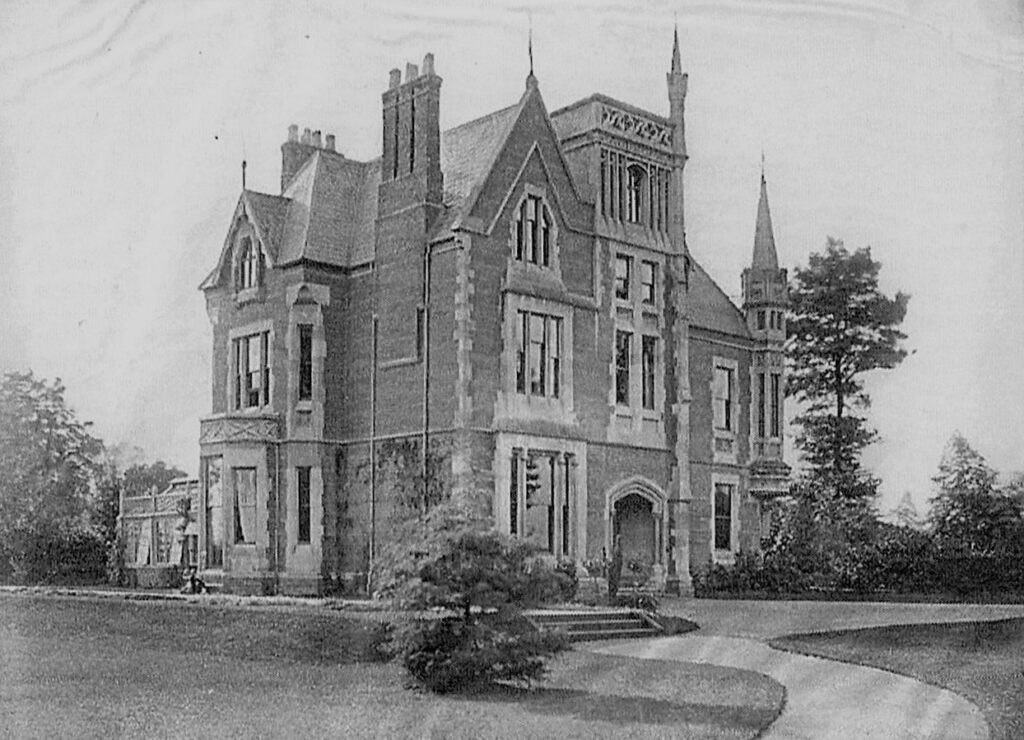
Eight meetings were held between September and October 1961, when about 100 people attended with no more than 25 cars. The following year, between April and September, 22 meetings took place with an average attendance of 200, with about 50 cars. Mr. Harris said that a two shilling enterance fee would be charged. Mr. D. G. Fuller of the county planning authority, suggested that the whole essence of dog racing is betting and the presence of bookmakers would attract larger crowds. “I beg to differ”, retorted Mr. Harris; “You cannot call a two shilling entry fee as a bet”.
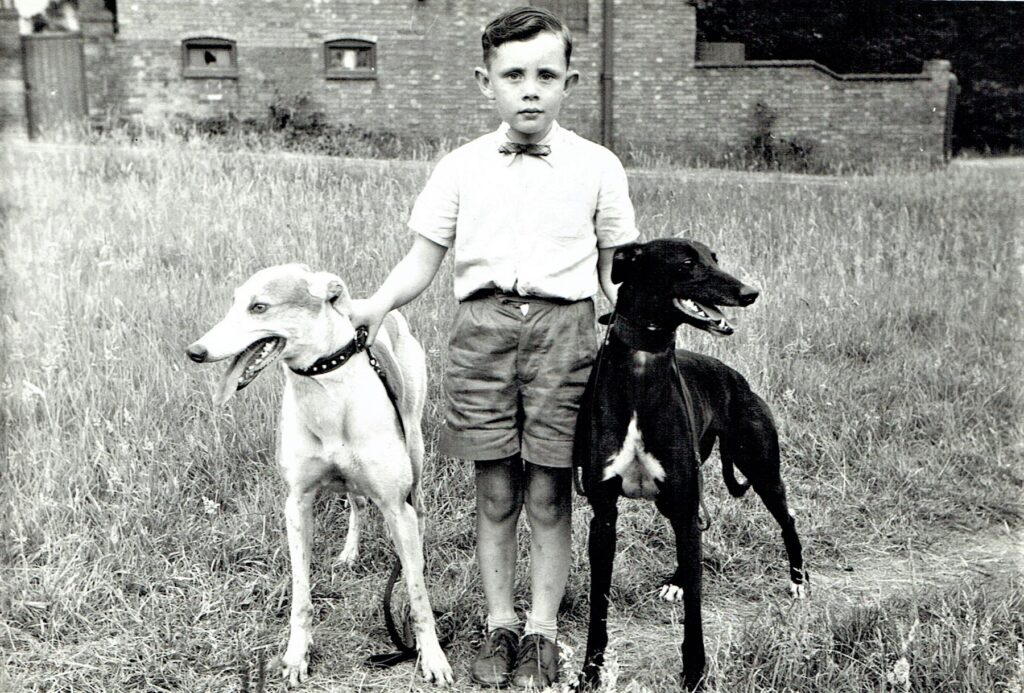
Appeal Conducted by Warwickshire County Council
Mr. Matthew Cropp, the senior county planning assistant stated that the application had been refused because Fernhill farm was within the green belt. If allowed, the development would be in conflict with the planning authorities intention of establishing a green belt around Coventry and was likely to encourage further developments in what was a ‘vunerable part of the green belt’. Mr. Cropp also stated that the local planning authority feared that this ‘un-sophisticated sport’ was becoming quite a commerical enterprise outside the provisions of the green belt and they did not want to see it grow beyond its present state. It was stated that the Minister would make his judgement in due coarse. Meanwhile, pending the appeal, meetings at Fernhill Farm were put on hold until further notice.
That judgement did not come until late the following year, when a letter, dated 9th October 1963 was sent from the Ministry and Local Government to the clerk of WRDC. The letter was then put before the planning committee meeting on October 22nd. But to the surprise of the councillors, the verdict did not go the way they thought it would.
An Inspector Calls – With Good News
Following a site visit by Inspector Mr. C. Bartlett, he made many positive observations but also had some reservations. His report found the site had been equipped with and used as a greyhound track and rudimentry structures had been erected. Equipment was not immediately apparent from the road and the existing structures were not really distinguisable from minor farm buildings. Spectators at the meetings had to-date been 200 maximum with about 50 cars. The inspector accepted that the site differed greatly from the normally associated term of a Greyhound Racing Track. It appeared to him that the use was not inappropriate in the green belt. The present structures did not detract from the openess of the countryside but the removal of the largest would lessen what little impact there was now. Apart from a small judge’s box and possibly the public convenience buildings were not essential for this unsophisticated sport. The narrowness of Rouncil Lane in the vicinity of the site was an argument against permitting the use, but the county surveyor had expressed no objection on highway grounds.
The inspector did not regard the loss of grazing land as being significant. He concluded that the appeal should be allowed subject to certain conditions. The Minister noted that it was the intention only to operate the track on a modest scale and to provide only the minimum of spectator facilities. The inspector reached the conclusion that the use as hitherto conducted differed greatly from the Greyhound Racing as normally understood. In these circumstances the Minister noted that the appellants were prepared to dispense with the existing shelter and he thought this would be desirable. Accordingly, the Minister allowed the appeal and permits.
A) The use of land at Fernhill Farm, Rouncil Lane, Beausale, near Kenilworth as a greyhound racing track.
B) The retention of the works and appartus necessary to that use and the retention of the judge’s box subject to the two following conditions;
I) That the means of access to the land shall be as may be agreed with the local planning authority or in default of agreement as shall be determined by the Minister.
II) That vehicle parking space shall be provided as may be agreed with the local planning authority or in default of agreement as shall be determined by the Minister.
Track Goes Into Operation
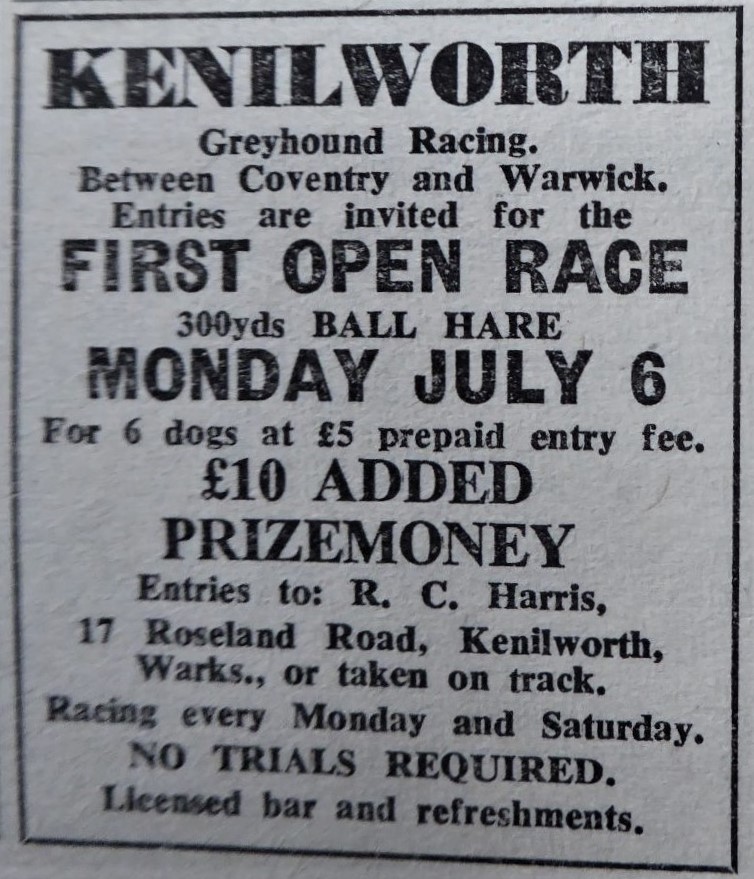
Following the positive result of the appeal, the track was soon in operation. During the spring and summer months of 1964, adverts started to appear, stating, amongst other things, that a ‘licensed bar and refreshments’ were available, which had never been mentioned in any part of the planning application. Racing took place on Monday evenings and Saturday afternoons with good prize money. Races were over 300 yards (in later years it increased to 350 yards).
Toilet Trouble
In February 1967, just over three years after getting planning permission for the track, the owners were refused permission to erect a public convenience on the site. This was refused by the Ministry of Housing and Local Government, who had given them permission in the first place to operate the track. The owners tried to appeal the judgement but were refused by WRDC, backed by WCC because the Ministry inspector stated the track was on the green belt and the toilet accomodation would have been sited in a prominent position. But where were people supposed to ‘go’ ?
The judgement seemed very harsh but was hardly surprising as the original planning permission required the owners to dismantle the toilets and ‘clubhouse’ buildings, which were in situ at the time of the application. Floodlights had also ‘appeared’ since the original inquiry, which no provisions had been agreed upon.
Flapping Tracks History
Flapping tracks are basicially un-licensed tracks and are generally run by the owners of dogs. These tracks had started back in the 1920s and were predomatory a working-class sport. Over the following 50 years these tracks became quite popular and were popping up all over the country. A flapping track was never far way from any town. These days, however, there are very few remaining, believed to be less than a handful. Licenced tracks, under the current regulators, the Greyhound Board of Great Britain (formerly the Greyhound Racing Association), have around 20 tracks in operation and only really exist for the betting industry. But these registered tracks have been in decline for many years and the once popular sport has an uncertain future.
Story to be continued…….. If you have anything of interest to add to this article please contact us.
